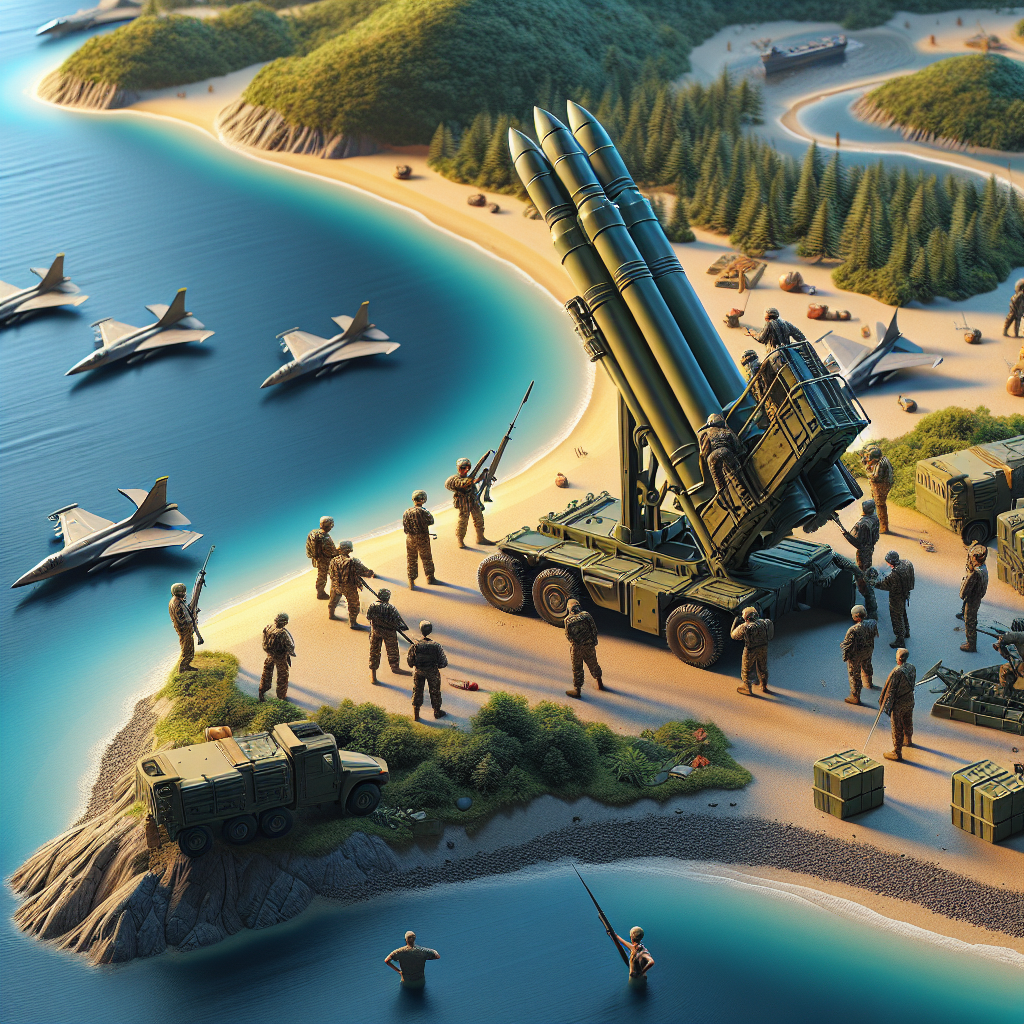Recently, the US military deployed anti-ship missile launchers for the first time on Batan Island in the Philippines. The Marine Corps unloaded this high-precision weapon at the northern tip of the island group, which faces Taiwan across the Bashi Channel.
On Sunday, April 27, the US and Philippine military conducted live-fire exercises facing the contested Zambales province in the South China Sea. They launched missiles and artillery, shooting down several simulated enemy drones using the Stinger missile during the exercises.
More than 14,000 Filipino and American troops participated in the “shoulder-to-shoulder” Balikatan exercise this year, focusing on conducting a “comprehensive combat test” for the defense treaty allies to address regional security concerns. The exercise will continue until May 9.
This joint military exercise not only simulates real warfare but also takes place near major geopolitical hotspots. These areas have become sensitive frontlines in the competition between China and the US, both during the administration of former President Joe Biden and the current President Donald Trump. Around 9,000 US military personnel and 5,000 Filipino military personnel participated in the operation. At least 260 Australian personnel joined, with smaller observer teams from Japan and other countries.
China strongly opposes this military exercise, calling it provocative.
A few days ago, a Chinese aircraft carrier fleet sailed near the Batan Islands, while the US Navy deployed the Navy Marine Expeditionary Ship Interdiction System (NMESIS) near Batan Island in the Bashi Channel last Saturday. The Bashi Channel is a strategic waterway connecting Taiwan and the Philippines.
US Marine Corps Lieutenant General Michael Cederholm stated during interviews with a group of journalists, including from the Associated Press, that deploying NMESIS to the first island chain for maritime deterrence and control is another step in their force design. These journalists were invited to witness the missile system transported to the Batan Islands by C-130 Air Force transport planes.
Cederholm mentioned, “We are not here to practice war plans; we are here to prepare to defend the Philippines.” Both the US and the Philippines emphasize that this year’s exercise focuses on a “comprehensive combat scenario” but deny that the military exercise is directed at China or any specific adversary.
When asked whether the US military would withdraw the anti-ship missile system from Batan Island after the combat exercises end, Cederholm replied, “We will not disclose when we move in, when we move out, and how long we stay. I can only say that we came here at the invitation and with the support of the Philippines government.” He added, “I am pleased that it is here.”
During this joint military exercise, US and Philippine forces will also coordinate on how to defend against maritime attacks from hostile forces in the Palawan province in western Philippines (facing the South China Sea) and the Cagayan province in the north (near the Batan Islands) to safeguard the Philippine islands.
Philippine Brigadier General Michael Logico stated that this military exercise is crucial for enhancing anti-aggression deterrence in the Bashi Channel region. He further expressed that “a peaceful region can only be maintained through the appropriate balance of opposing forces until… the two countries decide it is not worth fighting for this area.”
The Philippines is the longest-standing treaty ally of the US in Asia, formerly housing two of the largest US naval and air force bases outside of the mainland United States. These bases closed in the early 1990s, and the return of US forces to the Philippines for large-scale joint military exercises is in accordance with a 1999 agreement. Cederholm pledged to continue helping defend the Philippines after the end of the era of US military bases.
Earlier this month, the Chinese military conducted large-scale exercises in the waters around Taiwan and once again threatened the democratic island nation not to seek independence. Their navy, air force, army, and missile units participated in the drills.
(This article references reports from the Associated Press and Reuters)

